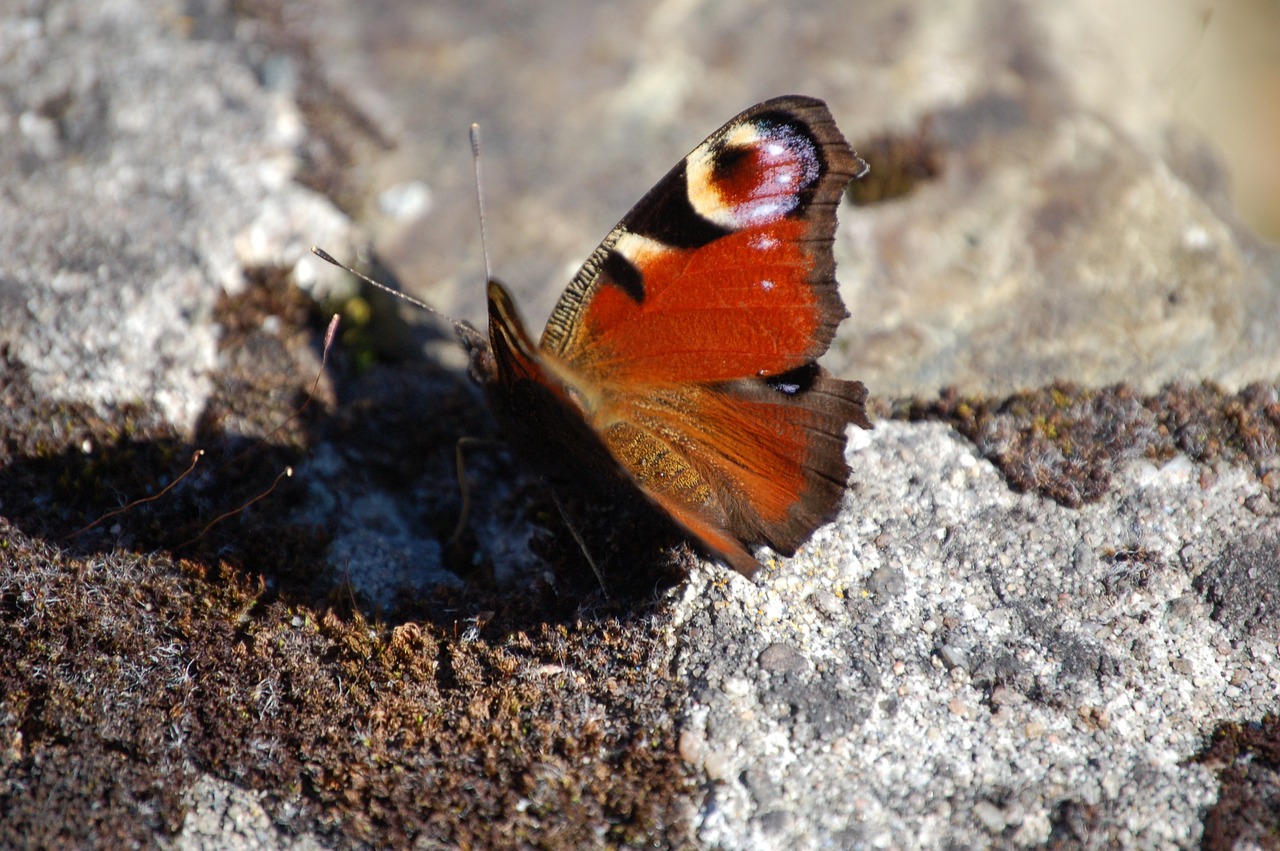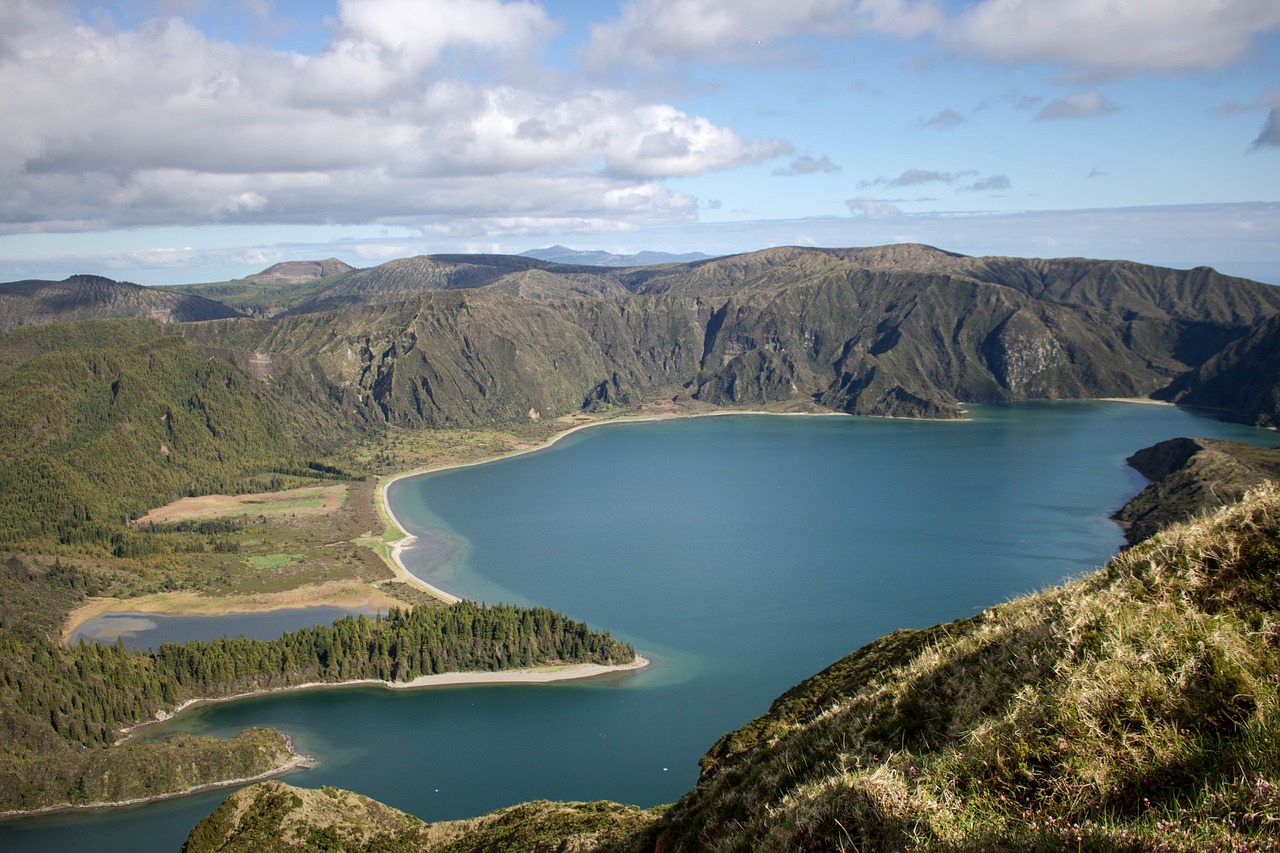Biodiversity Beyond Borders: The Importance of Transboundary Conservation
In our rapidly changing world, the concept of transboundary conservation has emerged as a beacon of hope for the preservation of biodiversity. As ecosystems know no boundaries, neither should our efforts to protect them. Imagine a vast landscape where animals roam freely, ecosystems flourish, and communities thrive—not just within the confines of a single country, but across borders. This is the vision that transboundary conservation aims to achieve.
Transboundary conservation refers to collaborative efforts between two or more countries to manage and protect shared ecosystems. This approach recognizes that biodiversity is a global treasure, often straddling national borders, and that its preservation requires cooperative strategies. When countries unite to tackle challenges such as habitat loss, climate change, and poaching, they not only enhance the health of their ecosystems but also promote sustainable development and economic growth.
One of the key reasons for the urgency of transboundary conservation is the alarming rate of biodiversity loss we are witnessing globally. According to the World Wildlife Fund, we are losing species at a rate 1,000 times faster than the natural extinction rate. This crisis is exacerbated by fragmented habitats, which can isolate populations and reduce genetic diversity. By implementing transboundary conservation strategies, countries can create corridors that allow species to migrate, breed, and thrive, ultimately enhancing their resilience against environmental changes.
Furthermore, transboundary conservation fosters a sense of shared responsibility among nations. When countries collaborate, they can pool resources, share knowledge, and develop innovative solutions to complex environmental problems. This not only enhances the effectiveness of conservation efforts but also strengthens diplomatic ties and promotes peace. After all, when nations come together for a common cause, they set a powerful example of unity and cooperation.
In addition to ecological benefits, transboundary conservation can have significant socioeconomic impacts. By protecting natural resources and promoting sustainable practices, local communities can benefit from ecotourism, sustainable agriculture, and other environmentally friendly initiatives. This creates a win-win situation where biodiversity is preserved while also providing livelihoods for people living in and around these vital ecosystems.
As we delve deeper into the world of transboundary conservation, we will explore successful case studies, the challenges faced, and the innovative strategies being implemented to overcome these obstacles. The journey toward preserving our planet's biodiversity is a collective one, and through cooperation and commitment, we can ensure that future generations inherit a world rich in natural wonders.
- What is transboundary conservation?
Transboundary conservation involves collaborative efforts between countries to manage and protect shared ecosystems, recognizing that biodiversity crosses national borders. - Why is transboundary conservation important?
It helps mitigate biodiversity loss, enhances habitat connectivity, and promotes sustainable development, benefiting both ecosystems and local communities. - What are some examples of successful transboundary conservation projects?
Examples include the Great Limpopo Transfrontier Park in Southern Africa and collaborative efforts in the Amazon Basin. - What challenges does transboundary conservation face?
Challenges include political tensions, differing regulations, and limited funding and resources. - How does technology play a role in transboundary conservation?
Innovative technologies such as remote sensing and data-sharing platforms enhance communication and coordination among conservation stakeholders.

The Need for Transboundary Conservation
In our rapidly changing world, the concept of transboundary conservation has emerged as a crucial strategy in the fight against biodiversity loss. Why is this so important? Well, imagine a beautiful tapestry woven from countless threads, each representing a different ecosystem. When we look at conservation efforts through the lens of national borders, we often see these threads fraying and breaking apart. Transboundary conservation is the solution to this problem, as it encourages nations to work together to preserve these vital ecosystems that do not recognize human-imposed boundaries.
The need for transboundary conservation arises from the challenges posed by fragmented ecosystems. Many species, such as migratory birds, large mammals, and aquatic life, do not adhere to borders. They require large, interconnected habitats to thrive. When conservation efforts are limited to a single country, it can lead to gaps in protection that threaten the survival of these species. For instance, a herd of elephants might roam across several countries in search of food and water, but if one country fails to implement effective conservation measures, it could jeopardize the entire herd's survival.
Furthermore, transboundary conservation promotes habitat connectivity, which is essential for maintaining healthy ecosystems. When habitats are connected, species can migrate freely, find mates, and access resources necessary for their survival. This connectivity is not only vital for wildlife but also for the health of the ecosystems they inhabit. A thriving ecosystem can provide numerous benefits, including clean air, clean water, and climate regulation.
To illustrate the necessity of cross-border collaboration, consider the following points:
- Shared Resources: Ecosystems often extend across multiple countries, meaning that resources such as water bodies, forests, and wildlife are shared. Effective management requires cooperation.
- Joint Challenges: Environmental challenges, such as climate change and pollution, do not stop at borders. Collaborative strategies are essential to address these issues effectively.
- Economic Benefits: Transboundary conservation can lead to sustainable economic opportunities, such as ecotourism, which benefits local communities and fosters a culture of conservation.
In conclusion, the need for transboundary conservation is not just a matter of protecting wildlife; it is about recognizing the interconnectedness of our ecosystems and the shared responsibility we have to protect them. By working together across borders, we can create a more sustainable future for all living beings on our planet. It’s an invitation to nations to come together, much like a team working towards a common goal, ensuring that our rich biodiversity continues to flourish for generations to come.

Successful Case Studies
When we think about transboundary conservation, it's easy to get lost in the sheer size of the task at hand. However, the world is filled with inspiring examples that showcase how countries can unite to protect their shared ecosystems. These successful case studies not only highlight the effectiveness of collaboration but also demonstrate the potential for sustainable practices that benefit both nature and local communities. Let's dive into some remarkable examples that illustrate this point.
One of the most notable examples is the Great Limpopo Transfrontier Park, which spans across South Africa, Mozambique, and Zimbabwe. This initiative is a prime illustration of how nations can come together to create a vast conservation area that allows wildlife to roam freely across borders. Imagine a landscape where elephants, lions, and other wildlife can traverse their natural habitats without being hindered by fences or borders. This park not only facilitates wildlife movement but also promotes ecotourism, which has become a significant source of income for local communities.
In the Great Limpopo area, several conservation strategies have been implemented that significantly enhance biodiversity and protect endangered species. Among these strategies are:
- Anti-poaching measures: These initiatives involve training local rangers and employing modern technology to combat illegal hunting.
- Habitat restoration: Efforts are made to restore degraded areas, ensuring that ecosystems can thrive and support diverse wildlife.
Community involvement in the Great Limpopo project cannot be overstated. Local communities play a pivotal role in the success of conservation efforts. Their participation fosters a sense of stewardship, leading to sustainable livelihoods that align with conservation goals. By engaging communities, the project bridges the gap between conservation efforts and the needs of the people living in these areas.
Another compelling case study can be found in the Amazon Basin, where countries like Brazil, Peru, and Colombia are collaborating to protect the world’s largest rainforest. This region is a treasure trove of biodiversity, home to countless species that are found nowhere else on Earth. The collaborative efforts in the Amazon aim not only to conserve the rainforest but also to combat climate change and protect the livelihoods of indigenous peoples.
In the Amazon, the focus is on creating a network of protected areas that span across borders. This approach ensures that ecosystems are preserved in their entirety, allowing flora and fauna to thrive. The success of these transboundary conservation efforts lies in the shared vision of multiple nations working toward a common goal—protecting one of the planet's most vital resources.
As we analyze these successful case studies, it's clear that transboundary conservation is not just a lofty ideal; it's a practical solution to some of the most pressing environmental challenges we face today. By fostering collaboration and engaging local communities, we can create a future where both people and nature thrive. The lessons learned from these initiatives can serve as a blueprint for future conservation efforts around the globe.
Q1: What is transboundary conservation?
A1: Transboundary conservation refers to collaborative efforts between neighboring countries to protect shared ecosystems and biodiversity across national borders.
Q2: Why is community involvement important in conservation efforts?
A2: Community involvement is crucial because it ensures that local people have a stake in conservation efforts, fostering stewardship and promoting sustainable livelihoods that align with environmental goals.
Q3: What are some challenges faced in transboundary conservation?
A3: Challenges include political tensions, differing regulations, and limited resources, which can hinder effective collaboration among countries.
Q4: How does technology aid transboundary conservation?
A4: Technology, such as remote sensing and data-sharing platforms, enhances monitoring and communication, allowing stakeholders to make informed decisions regarding conservation efforts.

Great Limpopo Transfrontier Park
The is a remarkable example of how countries can join forces to protect and nurture their shared natural heritage. Spanning across three nations—South Africa, Mozambique, and Zambia—this park covers an impressive area of over 35,000 square kilometers. It showcases the stunning landscapes and rich biodiversity of the region, serving as a critical habitat for numerous species. The park not only facilitates the movement of wildlife, such as elephants and lions, but also acts as a living laboratory for conservation practices.
One of the standout features of the Great Limpopo Transfrontier Park is its commitment to ecotourism. This approach not only helps in generating revenue for the local economies but also raises awareness about the importance of conservation. By engaging tourists in responsible travel, the park promotes sustainable practices that benefit both the environment and the communities surrounding it. Local guides often share their knowledge about the flora and fauna, creating a deeper connection between visitors and the natural world.
In addition to ecotourism, the park has implemented various conservation strategies aimed at protecting endangered species and restoring habitats. These strategies include:
- Anti-Poaching Measures: The park has established patrols and surveillance systems to combat poaching, which threatens many species.
- Habitat Restoration: Efforts are underway to restore degraded areas, ensuring that ecosystems can thrive and support diverse wildlife.
- Community-Based Conservation: Local communities are actively involved in conservation efforts, fostering a sense of ownership and responsibility towards the environment.
Moreover, the role of local communities cannot be overstated. Their participation is pivotal to the success of the Great Limpopo project. By engaging with local populations, the park ensures that conservation efforts align with community needs and aspirations. This collaboration has resulted in sustainable livelihoods for many families, bridging the gap between conservation and economic development. The park's initiatives have encouraged locals to become stewards of their environment, leading to a more harmonious coexistence between humans and wildlife.
In summary, the Great Limpopo Transfrontier Park stands as a beacon of hope for transboundary conservation. It exemplifies how collaboration, innovative conservation strategies, and community involvement can come together to create a thriving ecosystem. As countries continue to face the challenges of biodiversity loss, the lessons learned from this park can serve as a model for future conservation efforts worldwide.
What is the Great Limpopo Transfrontier Park?
The Great Limpopo Transfrontier Park is a protected area that spans across South Africa, Mozambique, and Zambia, aiming to conserve wildlife and promote sustainable tourism.
How does ecotourism benefit the local communities?
Ecotourism generates income for local communities, creates jobs, and raises awareness about the importance of conservation, thereby fostering a connection between people and nature.
What conservation strategies are implemented in the park?
The park implements various strategies, including anti-poaching measures, habitat restoration, and community-based conservation initiatives.
How can I visit the Great Limpopo Transfrontier Park?
Visitors can access the park through various entry points in each of the three countries, with numerous tour operators offering guided experiences.

Conservation Strategies Implemented
In the Great Limpopo Transfrontier Park, a variety of conservation strategies have been meticulously implemented to address the challenges of preserving biodiversity across borders. These strategies are not just about protecting the wildlife; they encompass a holistic approach that includes community involvement, sustainable practices, and rigorous enforcement of laws. One of the key strategies is the implementation of anti-poaching measures. Poaching poses a severe threat to many endangered species, and by collaborating on anti-poaching initiatives, the three countries have been able to significantly reduce illegal hunting activities. This collaborative effort has involved training local rangers, deploying surveillance technology, and establishing rapid response teams that can act swiftly when poaching incidents are reported.
Another critical aspect of the conservation strategies is habitat restoration. Many areas within the park have suffered from degradation due to human activities such as agriculture and urban development. By actively engaging in restoration projects, such as reforestation and the rehabilitation of wetlands, the park not only enhances biodiversity but also improves the overall health of the ecosystem. These efforts create a more resilient environment that can support a wider variety of species.
Additionally, the promotion of sustainable tourism plays a vital role in the conservation strategies. The park's management has worked to develop ecotourism initiatives that benefit both the environment and local communities. By attracting tourists to experience the natural beauty and wildlife of the park, funds are generated that can be reinvested into conservation efforts. Local communities are also given opportunities to participate in tourism-related businesses, which helps to foster a sense of ownership and stewardship over their natural resources.
To provide a clearer overview of these strategies, the following table summarizes the main conservation strategies implemented in the Great Limpopo Transfrontier Park:
| Conservation Strategy | Description |
|---|---|
| Anti-Poaching Measures | Collaboration on surveillance and rapid response to poaching incidents. |
| Habitat Restoration | Reforestation and rehabilitation of degraded areas to enhance biodiversity. |
| Sustainable Tourism | Development of ecotourism initiatives that benefit local communities and conservation efforts. |
These strategies are interlinked and create a robust framework for conservation. The success of the Great Limpopo Transfrontier Park demonstrates that when countries come together, share resources, and implement comprehensive strategies, they can achieve significant progress in protecting their shared natural heritage. This collaborative approach not only conserves biodiversity but also promotes sustainable development, ultimately benefiting both wildlife and local communities.

Community Involvement
When it comes to conservation, the role of local communities cannot be overstated. In the context of the Great Limpopo Transfrontier Park, community involvement is not just a bonus; it’s the backbone of the entire initiative. Imagine a tapestry woven from the threads of local knowledge, cultural practices, and ecological understanding—this is what communities bring to the table in conservation efforts. Their unique insights into the land and its resources allow for more effective and sustainable management practices.
One of the most significant aspects of community involvement is the concept of stewardship. When local people feel a sense of ownership over their environment, they are more likely to engage in practices that protect it. This stewardship is fostered through education and awareness campaigns that highlight the importance of biodiversity and the role that each individual can play in its preservation. For instance, workshops and training sessions help equip community members with the skills needed for sustainable agriculture, eco-tourism, and wildlife monitoring. As a result, they become active participants rather than passive observers in conservation efforts.
Moreover, the economic benefits that come from conservation initiatives can be transformative for local communities. By promoting eco-tourism, for example, communities can generate income while simultaneously protecting their natural resources. This creates a win-win situation where conservation efforts lead to improved livelihoods. Local businesses, such as guided tours or craft markets, thrive as they cater to tourists who are eager to experience the beauty of the region. This economic incentive not only bolsters community support for conservation but also helps reduce reliance on practices that may harm the environment.
Furthermore, community involvement fosters collaboration among diverse stakeholders. When local communities are included in decision-making processes, it leads to more comprehensive conservation strategies. The diverse perspectives and experiences of community members can help identify the most pressing conservation challenges and the most viable solutions. For example, community-led patrols have proven effective in combatting poaching, as locals are often the first to notice unusual activities in their areas. Their intimate knowledge of the land makes them invaluable partners in the fight against wildlife crime.
Ultimately, the success of the Great Limpopo Transfrontier Park—and similar initiatives worldwide—hinges on the active participation of local communities. Their involvement not only enriches conservation efforts but also ensures that these efforts are sustainable in the long run. As we look to the future, it’s clear that conservation cannot be a top-down approach; it must be a collaborative effort that respects and incorporates the voices of those who live closest to the land. By empowering communities, we create a powerful alliance for biodiversity conservation that transcends borders and benefits both people and nature.
- Why is community involvement important in conservation?
Community involvement is crucial because local people possess unique knowledge about their environment, which can lead to more effective conservation strategies. Their participation also fosters a sense of ownership and responsibility towards natural resources. - How can communities benefit economically from conservation?
Communities can benefit economically through eco-tourism, sustainable agriculture, and local businesses that support conservation efforts. This economic incentive encourages them to protect their natural resources rather than exploit them. - What role do local communities play in combating poaching?
Local communities can play a significant role in combating poaching through community-led patrols and monitoring initiatives. Their familiarity with the land allows them to detect suspicious activities and report them to authorities.

Amazon Basin Collaboration
The Amazon Basin, often referred to as the "lungs of the Earth," is a vast and intricate ecosystem that spans across several countries, including Brazil, Peru, and Colombia. This region is not just a treasure trove of biodiversity; it's also a critical component in regulating our planet's climate. The collaborative efforts among these nations are vital for the protection of this unparalleled rainforest and its myriad of species. But why is collaboration so crucial? Well, imagine trying to solve a complex puzzle where each piece represents a different country with its own set of challenges and regulations. Without cooperation, the picture remains incomplete, and the biodiversity within the Amazon suffers.
Countries involved in the Amazon Basin collaboration have recognized that the challenges posed by deforestation, illegal logging, and climate change do not respect national borders. Therefore, by working together, they can implement strategies that not only protect the environment but also promote sustainable development for local communities. This partnership is not just about conservation; it's about creating a holistic approach that benefits both the ecosystem and the people who depend on it.
One of the key strategies employed in the Amazon Basin collaboration is the establishment of protected areas that span national borders. These transboundary protected areas allow for the migration of wildlife and the preservation of critical habitats. For instance, the Amazon Cooperation Treaty Organization (ACTO) has been instrumental in fostering dialogue and cooperation among member countries. This organization facilitates various initiatives, such as:
- Joint monitoring of environmental changes
- Shared research on biodiversity
- Collaborative enforcement of environmental laws
Moreover, the collaboration extends to local communities, who are often the first line of defense against environmental degradation. Engaging indigenous populations and local stakeholders in conservation efforts not only empowers them but also ensures that their traditional knowledge is integrated into modern conservation practices. This synergy creates a more effective and culturally sensitive approach to biodiversity conservation.
In summary, the Amazon Basin collaboration exemplifies how nations can unite to tackle environmental challenges that transcend borders. By sharing resources, knowledge, and strategies, these countries are taking significant steps toward preserving one of the most biodiverse regions on the planet while simultaneously fostering sustainable development. The success of this collaboration serves as a beacon of hope, illustrating that when it comes to conservation, we are indeed stronger together.
- What is transboundary conservation? Transboundary conservation involves collaborative efforts between countries to manage and protect shared ecosystems and biodiversity.
- Why is the Amazon Basin important for biodiversity? The Amazon Basin is home to an incredible variety of species and plays a crucial role in regulating the Earth's climate.
- How do local communities contribute to conservation efforts? Local communities provide valuable traditional knowledge and are essential in implementing sustainable practices that protect the environment.
- What challenges does transboundary conservation face? Challenges include political tensions, differing regulations, and resource limitations that can hinder effective collaboration.

Challenges to Transboundary Conservation
Despite its critical importance, transboundary conservation faces a myriad of challenges that can hinder effective collaboration and management. One of the most significant hurdles is the presence of political tensions between neighboring countries. These tensions can stem from historical conflicts, differing national priorities, or even competition for natural resources. When countries are at odds, it becomes incredibly difficult to agree on conservation strategies, leading to fragmented efforts that ultimately fail to protect the shared ecosystems.
Another major challenge is the existence of differing regulations and legal frameworks. Each country has its own set of laws governing land use, wildlife protection, and environmental management. This can create a patchwork of regulations that complicates collaborative efforts. For instance, one country may allow certain activities that another prohibits, making it tough to enforce conservation measures consistently across borders. Such legal disparities can lead to misunderstandings and conflicts, further complicating the conservation landscape.
Moreover, funding and resource constraints present significant obstacles. Many transboundary conservation initiatives rely on external funding, which can be inconsistent and unpredictable. Countries may struggle to allocate sufficient resources for conservation projects, especially when competing with other pressing national issues such as healthcare and education. Limited financial support can stifle innovative conservation strategies and hinder the implementation of necessary actions.
To illustrate the challenges faced, consider the following table that outlines the key obstacles to transboundary conservation:
| Challenge | Description |
|---|---|
| Political Tensions | Conflicts between countries that hinder collaborative efforts. |
| Differing Regulations | Inconsistent laws across borders complicate conservation management. |
| Funding Constraints | Limited financial resources for sustaining conservation initiatives. |
Addressing these challenges requires a multifaceted approach. Countries must engage in open dialogue to resolve political disputes and build trust. Establishing joint legal frameworks can help align conservation efforts and create a cohesive strategy for managing shared resources. Additionally, identifying sustainable financing mechanisms, such as international grants or public-private partnerships, will be crucial in overcoming funding barriers.
In conclusion, while the road to successful transboundary conservation is fraught with challenges, it is not insurmountable. By fostering collaboration, establishing clear regulations, and securing adequate funding, nations can work together to protect our planet's invaluable biodiversity for future generations.
- What is transboundary conservation? Transboundary conservation refers to collaborative efforts between neighboring countries to protect shared ecosystems and biodiversity.
- Why is transboundary conservation important? It is essential for maintaining ecological integrity, enhancing habitat connectivity, and addressing biodiversity loss that transcends national borders.
- What are some successful examples of transboundary conservation? Notable examples include the Great Limpopo Transfrontier Park and collaborative efforts in the Amazon Basin.
- What challenges do transboundary conservation efforts face? Major challenges include political tensions, differing regulations, and funding constraints.

Political and Legal Barriers
When we think about the vastness of nature, it’s easy to assume that ecosystems can thrive independently, but the reality is much more complex. Political and legal barriers can act like towering walls, obstructing the flow of conservation efforts across borders. Imagine trying to build a bridge between two islands, only to find that each island has its own set of rules and regulations that make cooperation nearly impossible. This is the challenge faced by many transboundary conservation initiatives.
One of the primary issues arises from political disputes between neighboring countries. These disputes can stem from historical grievances, territorial claims, or even resource competition, creating an environment where collaboration becomes an uphill battle. For instance, if two countries are in a constant state of tension, any attempt to work together on conservation projects may be viewed with skepticism or outright hostility. This not only hampers communication but also leads to a lack of trust, making it difficult to implement effective strategies.
Furthermore, the legal frameworks governing conservation can vary significantly from one country to another. Each nation has its own laws regarding wildlife protection, land use, and environmental regulations. This patchwork of legislation can create confusion and complicate joint efforts. For example, if one country has stringent anti-poaching laws while its neighbor has lax regulations, illegal activities may easily spill over borders, undermining conservation efforts. This inconsistency can lead to a situation where one country’s efforts are negated by another’s lack of action, creating a frustrating cycle of inefficiency.
To illustrate this point, consider the following table that highlights common political and legal barriers faced in transboundary conservation:
| Barrier Type | Description | Impact on Conservation |
|---|---|---|
| Political Disputes | Conflicts between nations that hinder collaboration. | Reduced trust and communication, leading to stalled projects. |
| Legal Inconsistencies | Diverse laws and regulations governing conservation efforts. | Complicated implementation of joint initiatives. |
| Resource Competition | Disputes over access to shared natural resources. | Increased tension, limiting cooperative management. |
Addressing these barriers requires a multifaceted approach. Countries must engage in diplomatic dialogues to resolve conflicts and establish mutual agreements that prioritize conservation over political disagreements. Additionally, harmonizing legal frameworks can significantly enhance cooperation. By aligning conservation laws and regulations, nations can create a more cohesive strategy that benefits both the environment and their respective interests.
Ultimately, overcoming political and legal barriers is not just about protecting wildlife; it’s about fostering a sense of shared responsibility among nations. When countries recognize that their ecosystems are interconnected, they can work together more effectively to ensure that biodiversity thrives for generations to come. After all, the health of our planet knows no borders.
- What is transboundary conservation? Transboundary conservation refers to collaborative efforts between two or more countries to manage and protect shared ecosystems and biodiversity.
- Why is political cooperation important in conservation? Political cooperation is essential because it fosters trust, facilitates communication, and enables the implementation of effective conservation strategies across borders.
- How can legal barriers be addressed? Legal barriers can be addressed by harmonizing laws and regulations, which involves creating agreements that align conservation efforts across nations.
- What role do local communities play in transboundary conservation? Local communities are crucial as they often have the most direct impact on conservation efforts and can provide valuable insights and support for sustainable practices.

Funding and Resource Constraints
When it comes to transboundary conservation, one of the most significant hurdles that conservationists face is the issue of . Picture this: a vast, interconnected landscape that spans multiple countries, home to countless species and ecosystems. Now imagine trying to protect that landscape with limited financial resources and inconsistent support from various governments. It’s a daunting challenge, to say the least!
Many conservation initiatives require substantial investment to implement effective strategies, such as anti-poaching patrols, habitat restoration, and community engagement programs. However, securing consistent funding is often like trying to catch smoke with your bare hands. Governments may prioritize other pressing issues, leaving conservation programs underfunded and vulnerable. This situation can lead to a vicious cycle where lack of resources results in inadequate protection measures, further exacerbating biodiversity loss.
Moreover, the disparity in funding levels between countries can create imbalances in conservation efforts. For example, a wealthier nation may have the resources to invest in advanced technology or research, while its less affluent neighbor struggles to maintain basic conservation programs. This discrepancy can hinder collaborative efforts, as one country may feel overwhelmed by the burden of protecting shared ecosystems without adequate support from its partners.
To tackle these funding challenges, innovative solutions are necessary. Here are a few strategies that have shown promise in overcoming financial barriers:
- Public-Private Partnerships: Collaborating with private entities can provide additional funding sources and resources. By engaging businesses that benefit from biodiversity, such as tourism companies, conservation projects can secure financial backing and foster a sense of shared responsibility.
- International Grants and Donations: Seeking funding from international organizations, NGOs, and philanthropic foundations can supplement national budgets. These funds can be critical in launching and sustaining conservation initiatives.
- Community-Based Financing: Involving local communities in conservation efforts can lead to innovative financing solutions. For instance, ecotourism initiatives can generate revenue that is reinvested into conservation projects, creating a self-sustaining model.
Ultimately, addressing funding and resource constraints is essential for the success of transboundary conservation efforts. By fostering collaboration among countries, engaging private sector partners, and exploring creative financing mechanisms, we can pave the way for sustainable conservation practices that protect our planet's precious biodiversity.
- What is transboundary conservation? Transboundary conservation refers to collaborative efforts to protect ecosystems and biodiversity that span across national borders.
- Why is funding important for conservation? Adequate funding is crucial for implementing effective conservation strategies, such as habitat restoration and anti-poaching measures.
- How can communities contribute to conservation efforts? Local communities can play a vital role by participating in conservation initiatives, promoting sustainable practices, and benefiting from ecotourism.
- What are some successful examples of transboundary conservation? Notable examples include the Great Limpopo Transfrontier Park in Africa and collaborative efforts in the Amazon Basin.

The Role of Technology in Conservation
In the modern age, technology has become an indispensable ally in the fight for conservation. Imagine standing in the heart of a lush rainforest, armed not just with a map and compass, but with sophisticated tools that allow you to monitor wildlife and assess ecosystem health in real-time. This is the reality that technology brings to conservation efforts, making it easier and more effective than ever to protect our planet's precious biodiversity.
One of the most groundbreaking innovations in this field is remote sensing technology. This involves using satellites and drones to gather data about ecosystems across vast areas, transcending the limitations of traditional ground surveys. With remote sensing, conservationists can track changes in land use, monitor deforestation, and even assess the health of habitats from miles above. For example, satellite imagery can reveal illegal logging activities or the encroachment of agriculture into protected areas, allowing for timely interventions.
Moreover, the ability to conduct real-time monitoring has transformed how we understand and respond to environmental changes. By utilizing various sensors and cameras, conservationists can monitor animal movements and behaviors, providing insights into migration patterns and habitat use. This data is crucial for developing effective conservation strategies that are responsive to the needs of various species. For instance, knowing when and where animals are most active can help in planning anti-poaching patrols and creating wildlife corridors that facilitate safe passage across borders.
Another exciting advancement is the establishment of data-sharing platforms. These platforms allow countries and organizations to collaborate by sharing vital information and resources. Imagine a network where conservationists from different nations can access data on species populations, habitat conditions, and threats in real-time. This level of collaboration not only enhances transparency but also fosters collective decision-making, enabling stakeholders to devise strategies that are informed by comprehensive data.
However, the integration of technology into conservation is not without its challenges. Issues such as data privacy and the need for standardized protocols can complicate collaboration efforts. Additionally, there is a need for training and capacity building to ensure that all stakeholders can effectively utilize these technologies. Nevertheless, the potential benefits far outweigh these obstacles, paving the way for more effective conservation practices.
As we look toward the future, the role of technology in conservation will only continue to grow. From artificial intelligence that predicts poaching risks to blockchain systems that ensure sustainable supply chains, the possibilities are endless. By embracing these innovations, we can enhance our conservation efforts, ensuring that we not only protect our natural heritage but also promote a sustainable future for generations to come.
- What is transboundary conservation? Transboundary conservation refers to collaborative efforts between neighboring countries to manage and protect shared ecosystems and wildlife.
- How does technology help in conservation? Technology aids conservation by providing tools for real-time monitoring, data collection, and sharing, enhancing collaboration among stakeholders.
- What are some examples of successful transboundary conservation projects? Notable examples include the Great Limpopo Transfrontier Park and collaborative efforts in the Amazon Basin.
- What challenges do transboundary conservation efforts face? Challenges include political tensions, differing regulations, funding limitations, and the need for effective communication among nations.

Remote Sensing and Monitoring
In the realm of transboundary conservation, remote sensing technology has emerged as a game-changer, providing unparalleled insights into the health and status of ecosystems that span national borders. Imagine having a bird's-eye view of vast landscapes, allowing conservationists to monitor changes in real-time without disturbing the wildlife. This technology employs satellites and aerial imagery to collect data on land use, vegetation cover, and even wildlife populations. By harnessing this information, we can better understand the intricate dynamics of biodiversity and the threats it faces.
One of the most significant advantages of remote sensing is its ability to cover large areas quickly and efficiently. Traditional methods of monitoring, such as on-the-ground surveys, can be time-consuming and often limited by accessibility. In contrast, remote sensing enables the collection of data over vast swathes of land, making it easier to identify trends and changes in habitat conditions. For instance, conservationists can detect deforestation rates in the Amazon Basin or monitor the health of coral reefs in the Caribbean, all from thousands of kilometers away.
Moreover, remote sensing technology can be integrated with geographic information systems (GIS), allowing for complex analyses and visualizations of ecological data. This combination helps in mapping critical habitats, identifying migration corridors for endangered species, and assessing the impact of climate change on various ecosystems. For example, by overlaying satellite data with local biodiversity information, conservationists can pinpoint areas that require immediate attention and prioritize their efforts accordingly.
To illustrate the effectiveness of remote sensing in transboundary conservation, let’s consider a few key applications:
- Wildlife Tracking: Using satellite collars, researchers can monitor animal movements across borders, ensuring that migratory routes are protected.
- Habitat Assessment: Remote sensing allows for the evaluation of habitat quality and the identification of areas that may be under threat from human activities.
- Disaster Response: In the event of natural disasters, such as wildfires or floods, remote sensing can provide critical data for rapid response and recovery efforts.
As we move forward in the quest for effective transboundary conservation, the integration of remote sensing and monitoring technologies will be pivotal. These tools not only enhance our understanding of ecosystems but also foster collaboration among countries by providing a common platform for data sharing and decision-making. By embracing these innovative technologies, we can ensure that our efforts to protect biodiversity are informed, strategic, and impactful.
- What is remote sensing? Remote sensing is the acquisition of information about an object or phenomenon without making physical contact, often using satellite or aerial imagery.
- How does remote sensing benefit conservation efforts? It allows for real-time monitoring of ecosystems, efficient data collection over large areas, and better decision-making through data integration.
- Can remote sensing be used for wildlife tracking? Yes, remote sensing can track animal movements and monitor their habitats, especially in transboundary regions.
- What role does GIS play in remote sensing? GIS helps analyze and visualize ecological data collected through remote sensing, making it easier to identify critical areas for conservation.

Data Sharing Platforms
In the realm of transboundary conservation, serve as a cornerstone for effective collaboration among nations. These platforms are not just technological tools; they are lifelines that connect various stakeholders, including governments, NGOs, and local communities. Imagine trying to piece together a massive jigsaw puzzle without the picture on the box. That's what conservation efforts can feel like without access to shared data. By pooling resources and information, countries can create a comprehensive understanding of the ecosystems they share.
One of the most significant advantages of these platforms is the ability to provide real-time data on biodiversity health, habitat conditions, and species movements. For instance, when a country detects a sudden decline in a particular species, it can quickly share this information with neighboring nations to initiate a coordinated response. This not only helps in addressing immediate threats but also aids in long-term planning and strategy development.
Moreover, these platforms can facilitate the sharing of best practices and lessons learned from various conservation projects. Countries can learn from each other’s successes and challenges, which can significantly enhance the effectiveness of their conservation efforts. For example, if one nation develops a successful anti-poaching strategy, sharing that information can help neighboring countries implement similar measures, thereby creating a united front against wildlife crime.
To illustrate the impact of data sharing platforms, consider the following table that highlights key features and benefits:
| Feature | Benefit |
|---|---|
| Real-Time Monitoring | Allows for immediate response to ecological changes |
| Resource Sharing | Maximizes available funding and expertise |
| Best Practices Repository | Encourages learning from successful initiatives |
| Stakeholder Engagement | Involves local communities in conservation efforts |
In addition to enhancing collaboration, data sharing platforms can also promote transparency and accountability among participating nations. When data is openly accessible, it becomes easier to track progress, identify gaps, and hold stakeholders accountable for their commitments. This transparency fosters trust among countries, which is essential for building long-lasting partnerships in conservation.
However, it’s crucial to recognize that the effectiveness of these platforms relies heavily on the willingness of countries to participate and share information. Political will, along with adequate training and resources, is necessary to ensure that all stakeholders can effectively utilize these platforms. If countries are hesitant to share data due to fears of misuse or political ramifications, the potential benefits of collaboration may never be fully realized.
In conclusion, data sharing platforms are indispensable in the fight for transboundary conservation. They not only enhance communication and collaboration but also empower nations to work together in protecting our planet's invaluable biodiversity. As we move forward, investing in these platforms and fostering a culture of sharing will be critical to overcoming the challenges that lie ahead.
- What are data sharing platforms? Data sharing platforms are digital tools that facilitate the exchange of information and resources among various stakeholders involved in conservation efforts.
- Why are they important for transboundary conservation? They enable real-time data sharing, promote collaboration, and enhance transparency, which are essential for effective conservation strategies across borders.
- How can countries ensure successful data sharing? Countries can ensure success by fostering political will, providing adequate training, and establishing clear protocols for data sharing and usage.
- What types of data are typically shared? Commonly shared data includes information on species populations, habitat conditions, threats to biodiversity, and successful conservation practices.
Frequently Asked Questions
- What is transboundary conservation?
Transboundary conservation refers to collaborative efforts between neighboring countries to manage and protect shared ecosystems, wildlife, and natural resources. This approach recognizes that ecosystems do not adhere to political borders and emphasizes the need for joint strategies to preserve biodiversity.
- Why is transboundary conservation important?
It is crucial because many species migrate across borders and rely on interconnected habitats for survival. By working together, countries can enhance habitat connectivity, mitigate biodiversity loss, and promote sustainable practices that benefit both nature and local communities.
- Can you give examples of successful transboundary conservation projects?
Absolutely! One notable example is the Great Limpopo Transfrontier Park, which spans South Africa, Mozambique, and Zimbabwe. This initiative not only protects wildlife but also boosts local economies through ecotourism. Another example is the collaborative efforts in the Amazon Basin, involving Brazil, Peru, and Colombia, aimed at conserving the world’s largest rainforest.
- What challenges do transboundary conservation initiatives face?
Challenges include political tensions, differing regulations, and limited resources. These obstacles can hinder cooperation and effective management of shared ecosystems. Addressing these issues is essential for successful conservation efforts.
- How does technology aid in transboundary conservation?
Technology plays a vital role by providing tools for monitoring and data sharing. For instance, remote sensing technology allows real-time tracking of environmental changes, while data-sharing platforms enhance collaboration by making vital information accessible to all stakeholders involved in conservation.
- What role do local communities play in transboundary conservation?
Local communities are key players in the success of transboundary conservation projects. Their involvement fosters stewardship and helps align conservation goals with community needs, ensuring that both biodiversity and livelihoods are protected.



















